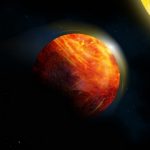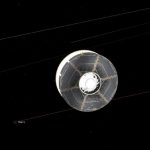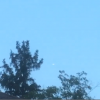An asteroid trailing after Mars could actually be the stolen twin of our moon0
- From Around the Web, Space
- November 9, 2020
The asteroid in question, called (101429) 1998 VF31, is part of a group of trojan asteroids sharing the orbit of Mars.

The asteroid in question, called (101429) 1998 VF31, is part of a group of trojan asteroids sharing the orbit of Mars.

Most stars in the central 1,000 light-years of the Milky Way’s hub formed when it was swollen with infalling gas more than 10 billion years ago, according to astronomers from the Blanco DECam Bulge Survey.

The scientists used computer simulations to predict conditions

According to new research using data from NASA’s retired planet-hunting mission, the Kepler space telescope, about half the stars similar in temperature to our Sun could have a rocky planet capable of supporting liquid water on its surface.

Gravitational-wave scientists have unveiled their latest catalog of events, revealing a surprising number of massive black holes.

Mysterious, intense blasts of radio energy have been detected from within our own galaxy, astronomers have said.

On October 27, 2020, at 4:40 EDT (1:40 p.m. PDT), NASA’s Mars 2020 spacecraft, which includes the Perseverance rover and the Ingenuity helicopter, reached its halfway point — 235.4 million km (146.3 million miles) — on its journey to Mars.

with Johnny and Jan Mirehiel, Phil Gruber, Anne Smith and very special guests!

Earth’s most arid desert may hold a key to finding life on Mars.
Life may be dull as we all stay home to curb the spread of COVID-19, but sky-watchers are set to have a bumper November. According to EarthSky, the South and North Taurid meteor showers are due to appear this month, followed by a Leonid meteor shower and a penumbral lunar eclipse.






























































